What are subsidies?
A subsidy is a form of financial assistance paid by the government to a business or economic sector.
Why subsidies are given?
Subsidies might be given to
- Lower the cost of necessary goods which might affects a major part of population. Example, subsidies given to essential food items and oil (in India).
- Guarantee the supply of merit goods, which the government thinks consumers should consume.
- Help domestic firms become more competitive in the international market, also known as protectionism.
Effect of subsidy
Subsidy reduces the cost of production. Thus the supply curve for the product shifts vertically downwards by the amount of subsidy provided.
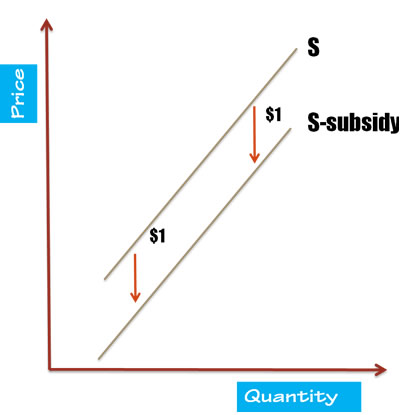
Impact of subsidies on Producers
Subsidies are monetary benefits provided to the producer by the Government on account of production of certain commodity. Subsidies lead to increase in producer revenue. Due to subsidy the supply curve (S-subsidy) will shift vertically downwards by the amount of subsidy. This reduces the cost of production and more is now being supplied at every price. Through the diagram, we can see, initially the market was at equilibrium with Qe being supplied & demanded at Price (Pe).
- Government provides subsidy WZ per unit.
- Producers lower their prices to P1 Increase output till a new equilibrium is reached at Q1
- The producer will however not pass all the subsidy benefit to the consumer.
- Initial producer revenue was OPeXQe which now increases to ODWQ1.
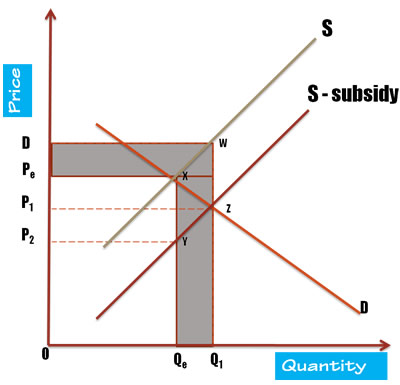
Impact of subsidies on Consumers
Consumers will now consume more of the product due to lower prices. Consumers pay less as the prices fall from Pe to P1, however, they end up consuming more from Qe to Q1. It is difficult to say by how much the consumer expenditure will increase or fall as it will depend on their relative saving and extra expenditure.
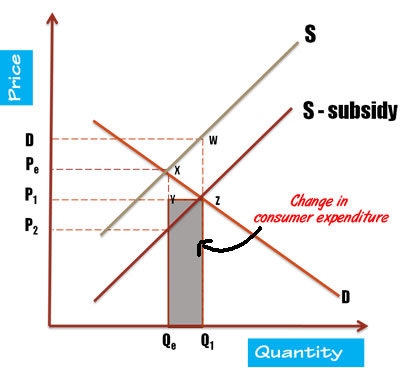
Impact of subsidies on Government
Government will end up paying a subsidy of P1DWZ. Obviously, this will involve an opportunity cost. Government will have to forego investments in other sectors of the economy in order to provide subsidy. At the end of the day, the burden usually lies on the taxpayer.
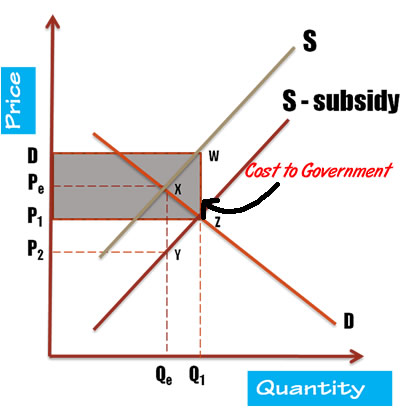
Subsidies and elasticities
The impact of subsidies on consumers will depend on the relative price elasticity of demand and price elasticity of supply.
Scenario 1: When PED is elastic relative to PES
The consumers do not benefit from a great fall but, because their demand is relative elastic, they increase their consumption by a significant amount.
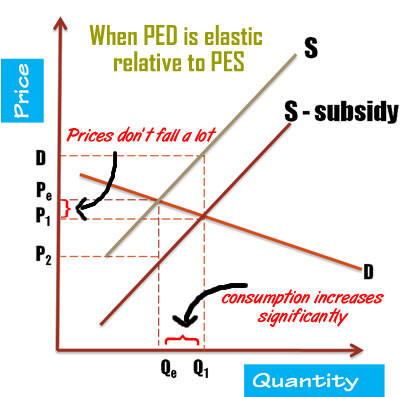
Scenario 2: When PED is inelastic relative to PES
Consumption of the product is increased and so is the revenue of the producer.
The consumer benefit from a relatively large price fall, but their demand is relative inelastic, their consumption does not increase by a great amount.






